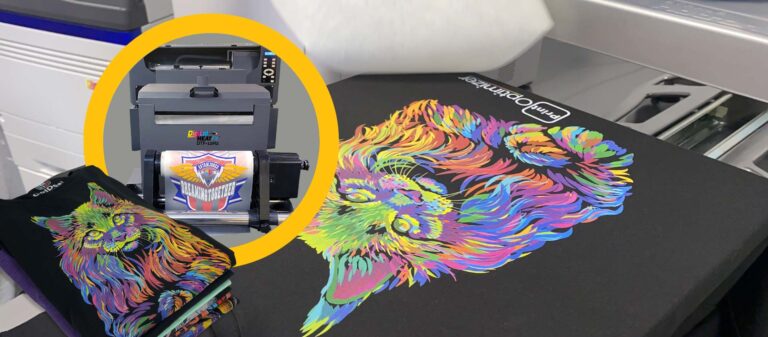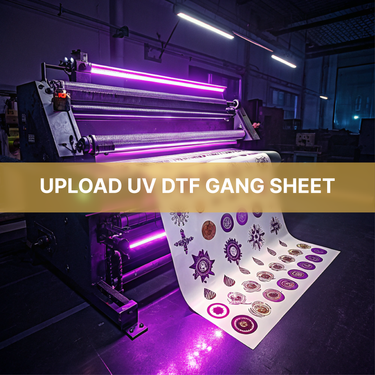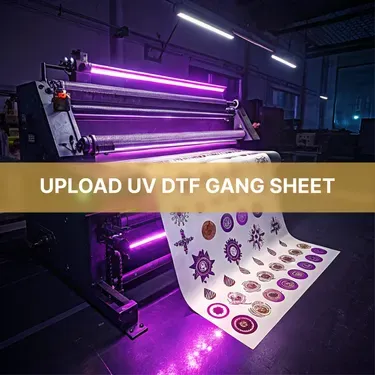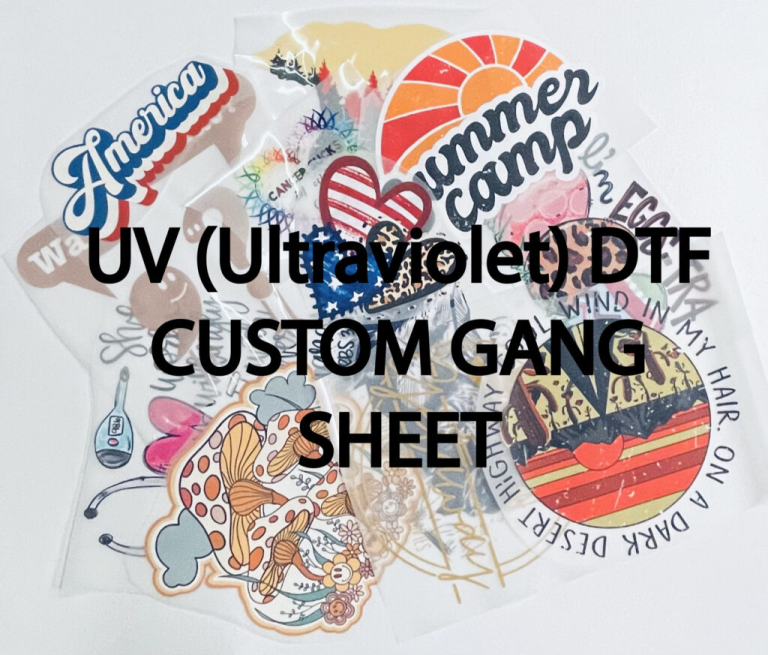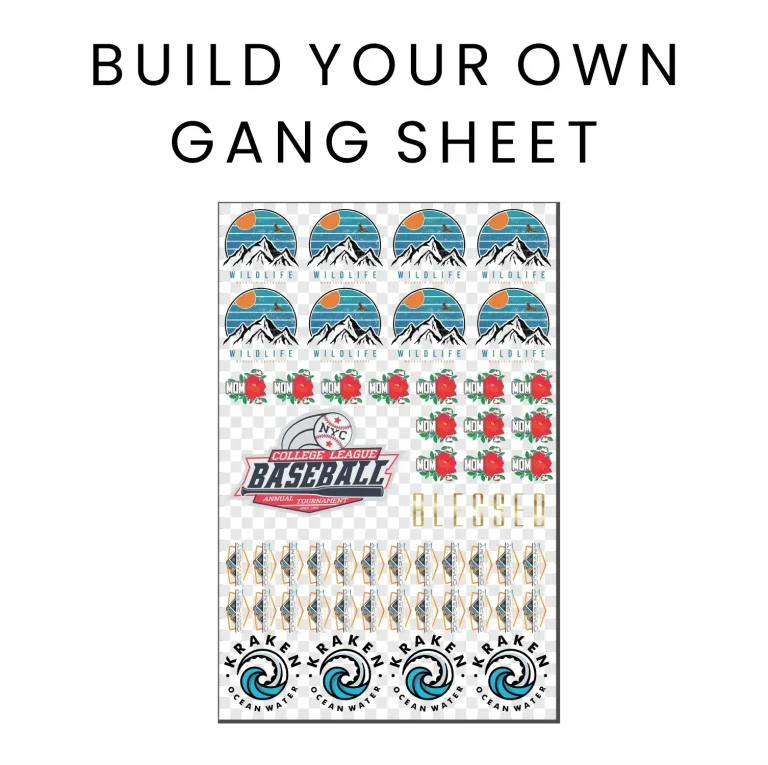DTF Printing: Your FAQ on Everything You Need to Know
DTF printing, or Direct-to-Film printing, is at the forefront of modern textile technology, captivating both small businesses and established brands with its remarkable capabilities. This innovative printing method offers a sustainable alternative to traditional techniques, enabling vibrant and detailed designs to be transferred onto a variety of materials. As entrepreneurs seek effective and eco-friendly solutions, the benefits of DTF printing become even more apparent, particularly in reducing waste and energy consumption. In this guide, we will explore the intricacies of the DTF printing process, highlighting its advantages and applications in today’s competitive market. Join us as we dive into everything you need to know about this revolutionary printing technique and discover how it can elevate your business to new heights.
Also known as Direct-to-Film printing, DTF technology is transforming the landscape of custom garment printing. This modern approach combines the best features of screen and digital printing, catering to the growing demand for versatile and efficient printing solutions. By leveraging sustainable printing techniques, DTF not only enhances the quality of prints but also aligns with the eco-conscious values of today’s consumers. With its ability to produce stunning, intricate designs cost-effectively, DTF printing for small businesses presents a compelling opportunity to thrive in the competitive print-on-demand market. Let’s delve deeper into this innovative printing process to uncover its potential and benefits.
Understanding the DTF Printing Process
The Direct-to-Film (DTF) printing process is intricate yet straightforward, making it accessible for both individuals and small businesses looking to enter the custom apparel market. Essentially, the DTF printing method begins with the creation of a digital design, which is then printed onto a specialized film. This allows for high-resolution images with stunning color depth to be crafted on a variety of substrates. Once the design is confirmed, an adhesive powder is applied to the wet ink, ensuring a strong bond once transferred to the garment.
Following the application of adhesive, the film is cured with heat, a crucial step that ensures the inks adhere properly and withstand washing and wear. The final transfer involves heat-pressing the printed film onto the chosen textile, solidifying the design’s placement and durability. Each of these steps contributes to the versatility and vibrant results that DTF printing is celebrated for, especially in projects that require detailed images or colors.
Benefits of DTF Printing for Small Businesses
DTF printing offers sizeable benefits for small business owners, particularly those starting their ventures in garment customizations. One of the most significant advantages is its cost-effectiveness. Unlike traditional screen printing methods, which require large minimum orders and costly setup fees, DTF printing allows individuals to print on-demand. This flexibility means small businesses can experiment with various designs without incurring significant upfront costs, making it perfect for testing new products and engaging with niche markets.
Moreover, DTF printing supports small businesses’ sustainability goals by minimizing waste through efficient ink usage and fewer materials required for setup. By leaning towards eco-friendly printing techniques, small businesses can appeal to environmentally conscious consumers, thereby enhancing their brand values and fostering loyalty among customers who prioritize sustainability.
Comparing DTF Printing with Other Techniques
In a market teeming with different printing techniques, understanding how DTF compares to DTG (Direct-to-Garment) and screen printing is crucial for business owners. While DTG excels in producing high-quality, colorful prints directly on garments, it often has limitations regarding the types of fabric that can be used effectively. In contrast, DTF printing shines through its adaptability, allowing users to print on a range of materials including polyester and blends, providing more versatility for businesses targeting diverse product offerings.
Additionally, when contrasting DTF with screen printing, small businesses will find DTF significantly more attractive for short runs and custom orders. Screen printing can be labor-intensive and costly for projects that require fewer pieces. DTF’s streamlined process reduces both time and costs, enabling businesses to cater to customers looking for personalized items without the burden of heavy inventory.
Advantages of Sustainable Printing Practices
The growing environmental concerns have prompted a search for sustainable printing techniques in the textile industry. DTF printing stands out as an eco-friendly option that aligns with green initiatives, primarily due to its low waste and efficient use of materials. By using only the necessary amount of ink and reducing energy consumption compared to older printing methods, DTF printing encourages businesses to make a positive environmental impact while still catering to the vibrant demands of consumers.
Implementing sustainable printing practices not only benefits the planet but also enhances a brand’s reputation. Customers are increasingly leaning towards businesses that demonstrate social responsibility. By adopting DTF printing, companies can market themselves as environmentally conscious, creating a competitive edge that resonates with a growing segment of consumers who value eco-friendly practices.
The Future of DTF Printing Technology
As technology continues to evolve, the future of DTF printing looks promising, particularly with advancements that enhance efficiency and print quality. Emerging printers designed specifically for DTF applications are being developed to further streamline the printing process. This means faster turnaround times and even better quality output, which is essential for keeping pace with market demands, especially for small businesses that thrive on customer satisfaction and quick service delivery.
Moreover, innovations in inks and adhesive powders are expected to improve the overall performance of DTF printing, making it an even more viable option for businesses seeking high-quality results. This trajectory suggests that DTF printing will not only remain relevant but possibly become the preferred choice for custom garment printing as market trends shift towards more personalized and unique offerings.
Essential Equipment for DTF Printing Success
Investing in the right equipment is pivotal for success in DTF printing, which requires specific tools to ensure high-quality outcomes. A specialized inkjet printer is necessary, as it must be capable of using the unique inks formulated for DTF applications. Knowing that the quality of the printer impacts the final product, many businesses focus on acquiring high-resolution printers that can deliver vibrant color profiles.
In addition to the printer, high-quality DTF transfer films are essential for achieving crisp, clear designs. The integrity of the transfer film can significantly influence print durability. Pairing the right film with an efficient heat press adds to the reliability of the results, ensuring that the transfer process yields strong, lasting prints on various substrates. By strategically investing in these critical pieces of equipment, businesses can optimize the advantages of DTF printing and position themselves for success.
Frequently Asked Questions
What is DTF printing and how does it differ from other printing methods?
DTF printing, or Direct-to-Film printing, is a technique that transfers designs onto garments using a special film. Unlike Direct-to-Garment (DTG) printing, which prints directly onto fabric, DTF printing offers more versatility by accommodating various materials, including cotton and polyester. Additionally, unlike traditional screen printing which can be costly for small batches, DTF is ideal for small runs and detailed designs.
What are the key benefits of DTF printing for small businesses?
DTF printing offers several benefits for small businesses, including its cost-effectiveness, ability to produce vibrant, detailed prints, and compatibility with various fabrics. This technology allows entrepreneurs to create custom garments quickly, catering to niche markets without heavy upfront costs associated with screen printing or DTG printing.
How does the DTF printing process work?
The DTF printing process involves several steps: First, a design is created using graphic software, which is printed onto DTF transfer film with an inkjet printer. Next, a powder adhesive is applied to the wet ink. After curing the ink with heat, the film is pressed onto the garment using a heat press, resulting in a durable and vibrant print.
Is DTF printing an eco-friendly option for sustainable printing techniques?
Yes, DTF printing employs sustainable printing techniques by reducing waste and energy consumption. Its precise ink application minimizes excess usage, and it offers a cleaner alternative to traditional methods, helping businesses meet growing ecological demands in the textile industry.
What equipment is necessary to start DTF printing?
To begin DTF printing, you need a specialized inkjet printer for DTF transfer films, high-quality DTF transfer films, a reliable heat press machine, and adhesive powder for bonding the ink to the fabric. This setup allows for a seamless transfer process and high-quality results.
Can DTF printing handle complex designs and small batch orders effectively?
Absolutely! DTF printing is well-suited for complex designs and small batch orders. Its flexibility in printing allows for intricate details and vibrant colors even in low quantities, making it a preferred choice for custom garment printing in the evolving print-on-demand market.
| Key Aspect | Details |
|---|---|
| Introduction | DTF printing is revolutionizing textile printing with vibrant designs and eco-friendly processes. |
| What is DTF Printing? | Process of printing designs onto a special film, then heat-transferring to garments. |
| How Does DTF Printing Work? | 1. Design Creation 2. Film Printing 3. Powder Adhesive Application 4. Heat Curing 5. Transfer to Garment |
| Advantages of DTF Printing | 1. Vibrant Colors 2. Versatility 3. Sustainability 4. Cost-Effective |
| Suitability for Business | Ideal for personalized items, small batches, and intricate designs. |
| Comparative Analysis | DTF vs. DTG: DTF is more versatile. DTF vs. Screen Printing: Better for smaller runs. |
| Required Equipment | 1. Inkjet Printer 2. Transfer Film 3. Heat Press 4. Adhesive Powder |
Summary
DTF printing is an innovative and sustainable solution that addresses the growing needs of the custom garment printing industry. It leverages advanced technology to produce stunning, detailed designs directly onto various fabrics while minimizing environmental impact. This method is particularly advantageous for small businesses and entrepreneurs aiming to enter the competitive market of custom apparel, as it offers cost-effective solutions for low-volume or personalized printing. As businesses increasingly look for ways to reduce waste and operate sustainably, DTF printing stands out as a clear frontrunner, combining creativity, efficiency, and eco-friendly practices.



